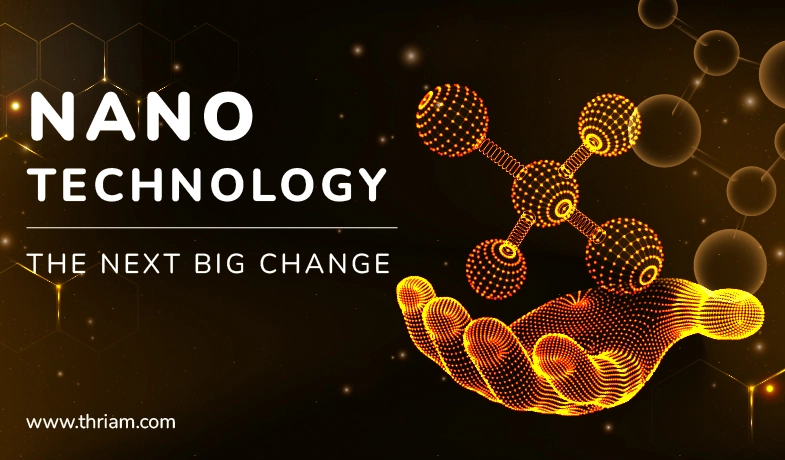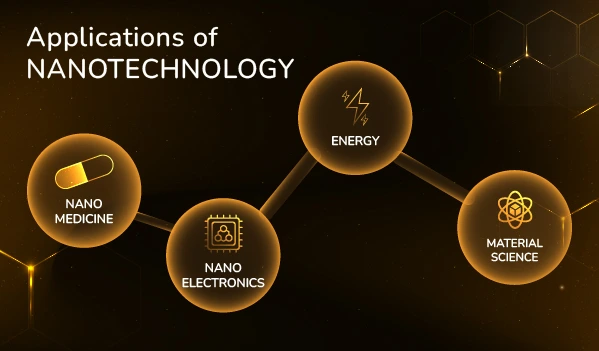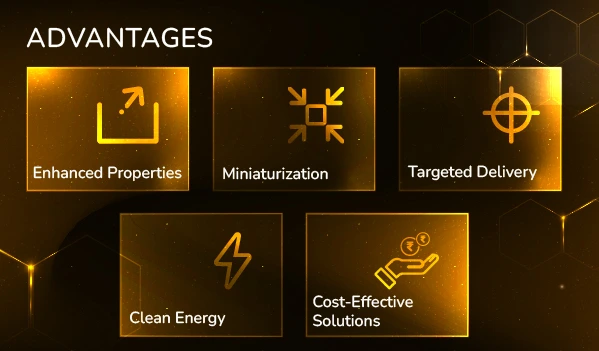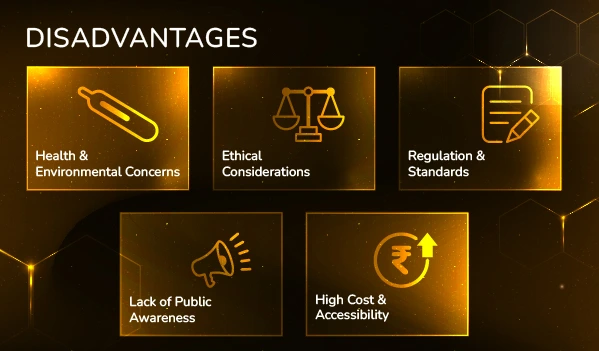Unveiling the World of Nanotechnology: A Comprehensive Exploration

Exploring the World of Nanotechnology: A World of Infinite Possibilities
The world of nanotechnology is a captivating and rapidly advancing field that holds the potential to transform various industries and revolutionize the way we live. From medicine to electronics, energy to materials science, nanotechnology has found its way into every nook and cranny of our lives, albeit in the smallest form imaginable. In this article, we will embark on a journey to explore the marvels of nanotechnology and uncover the incredible possibilities it offers.
I. Unearthing the History of Nanotechnology: From Vision to Reality:

Nanotechnology, the science of manipulating materials at the atomic and molecular scale, has a captivating history that spans several decades. From the visionary ideas proposed by renowned scientists to the groundbreaking discoveries that paved the way for its realization, the journey of nanotechnology is as remarkable as the field itself. In this article, we will take a glimpse into the history of nanotechnology, tracing its origins and highlighting significant milestones along the way.
Birth of a Vision:

The concept of nanotechnology was first introduced by physicist Richard Feynman in his seminal speech "There's Plenty of Room at the Bottom" in 1959. Feynman envisioned a future where scientists could manipulate and control individual atoms and molecules, leading to countless possibilities in science and technology. This visionary speech laid the foundation for the field and inspired generations of researchers to pursue the realm of the nanoscale.
The Emergence of Nanomaterials:
In the 1980s, the stage was set for the emergence of nanomaterials. Gerd Binnig and Heinrich Rohrer's invention of the scanning tunneling microscope (STM) in 1981 revolutionized the field of nanotechnology by enabling researchers to visualize and manipulate individual atoms. This breakthrough innovation earned Binnig and Rohrer the Nobel Prize in Physics in 1986 and paved the way for further advancements in nanoscale manipulation.
The Birth of Nanoscience
Nanoscience, the fundamental study of nanoscale phenomena, became an established field in the 1990s. Scientists like Don Eigler demonstrated precise manipulation of individual atoms to spell out "IBM" using the STM in 1989, showcasing the possibility of atomic-scale engineering. Furthermore, advancements in nanofabrication techniques allowed for the controlled synthesis and assembly of nanoscale structures, fueling further progress in the field.
The Era of Commercialization:
In the early 2000s, nanotechnology transitioned from the realm of scientific curiosity to practical application. Nanoparticles started finding their way into consumer products, from sunscreens with enhanced UV protection to stain-resistant fabrics. The potential of nanotechnology to revolutionize industries such as medicine, electronics, and energy began to be recognized, paving the way for increased investment in research and development.
Present and Future:
Today, nanotechnology is a thriving multidisciplinary field with expanding frontiers. Nanomedicine is revolutionizing diagnostics and targeted drug delivery. Nanoelectronics is driving advancements in miniaturization and increasing computing power. Nanomaterials are shaping industries, with applications ranging from aerospace to renewable energy. The field continues to evolve, with ongoing research exploring new possibilities and addressing potential challenges.
II. Demystifying Nanotechnology: Unraveling Its Definition:

Nanotechnology, a term that often sparks curiosity and intrigue, refers to the manipulation and control of materials at the atomic and molecular scale. It involves working with substances at dimensions on the nanometer scale, where one nanometer is equivalent to one billionth of a meter. In this article, we will delve into the definition of nanotechnology, shedding light on its fundamental principles and the vast potential it holds across various fields.
Understanding the Nanoscale:
The foundation of nanotechnology lies in the nanoscale, where the behavior of materials can change dramatically. At this incredibly small size, atoms and molecules interact in unique ways, granting materials with distinct properties. Scientists have learned to harness the power of the nanoscale to engineer materials with enhanced strength, reactivity, and conductivity, leading to the development of innovative solutions in diverse industries.
An Interdisciplinary Field:
Nanotechnology is an interdisciplinary field that draws knowledge and techniques from various scientific disciplines, such as physics, chemistry, biology, and engineering. This interdisciplinary nature allows researchers to explore and manipulate materials from multiple perspectives, resulting in exciting advancements that fuse different domains of science.
Potential Applications:
The potential applications of nanotechnology are vast and varied. In medicine, nanotechnology enables targeted drug delivery systems, nano-based diagnostics, and regenerative medicine approaches. In electronics, it drives advancements in miniaturization, improving the efficiency and performance of devices. In energy, nanomaterials aid in the development of efficient solar cells, high-capacity batteries, and clean energy technologies. Additionally, nanotechnology finds applications in materials science, environmental remediation, agriculture, and many other fields.
III. The Future is Nanotech: Exploring the Endless Possibilities of Nanotechnology Applications:

Nanomedicine:
The applications of nanotechnology in medicine are vast and promising. Nanoparticles, tiny particles that can be engineered to carry specific drugs or other therapeutic agents, can deliver effective treatments directly to target cells and tissues. They can also help improve the diagnosis of diseases by detecting biomarkers at extremely low levels. Nanomedicine also offers the potential for regenerative medicine approaches, where nanoscale scaffolds can promote tissue healing and regeneration.
Nanoelectronics:
Nanotechnology has already had a profound impact on electronics, and it continues to revolutionize the field today. It has enabled the miniaturization of electronic devices, leading to the development of faster and more powerful computers and smartphones. Nanomaterials, such as graphene and carbon nanotubes, exhibit exceptional conductivity and can be used in various applications, including advanced batteries, sensors, and displays.
Energy:
The energy sector has also been impacted by the applications of nanotechnology, with innovations in nanomaterials playing a critical role. For example, nanotech-enabled solar cells can capture more sunlight and convert it into electricity more efficiently than traditional cells. Nanomaterials can also be used to improve the performance and lifespan of batteries, facilitating the storage and use of renewable energy sources.
Materials Science:
Nanotechnology has transformed materials science, allowing researchers to engineer materials with remarkable properties and functions. Nanocoatings, for instance, can enhance the durability, scratch resistance, and other properties of surfaces, leading to applications ranging from self-cleaning windows to waterproof fabrics. Nanoporous materials possess large surface areas and can be used as catalysts, adsorbents, sensors, and more.
IV. Advantages of Nanotechnology:

Enhanced Properties:
One of the most significant advantages of nanotechnology is the possibility of enhancing the properties of materials. At the nanoscale, materials behave differently, and researchers can manipulate and engineer these properties to achieve enhanced strength, reactivity, and conductivity. For instance, the addition of nanoparticles to a material can make it stronger while reducing its weight, leading to better performance with less material.
Miniaturization:
Nanotechnology has enabled the miniaturization of devices, from computer chips to medical implants. By reducing the size of components, devices can become smaller and more efficient while packing more functionality into a smaller space. This can lead to advancements in a range of fields, from wearables to robotics and industrial manufacturing.
Targeted Delivery:
In medicine, the targeted delivery of drugs to specific cells or tissues is crucial for effective treatment. Nanoparticles offer a means of achieving precisely this, by delivering drugs or other therapeutic agents directly to target cells or tissues. This can improve the efficacy of treatments while minimizing negative side effects, representing a major advantage of nanotechnology in medicine.
Clean Energy:
Nanotechnology has the potential to contribute significantly to the development of clean energy solutions. For instance, nanomaterials can be used to improve the efficiency of solar cells, creating more effective and cost-efficient renewable energy sources. Additionally, nanoparticles can enhance the performance of batteries and fuel cells, facilitating the transition to a more sustainable energy infrastructure.
Cost-Effective Solutions:
Nanotechnology also has the potential to facilitate more cost-effective solutions across various industries. For instance, the strong and lightweight materials made possible by nanotechnology can be used in the aerospace industry to reduce fuel consumption and increase payloads, thereby reducing the overall cost of launches. Additionally, the enhanced efficiency of devices and processes resulting from nanotech-enabled solutions can lead to cost savings in manufacturing and other industries.
V. Disadvantages and Challenges of Nanotechnology:

Health and Environmental Concerns:
One significant challenge of nanotechnology is understanding its potential impact on human health and the environment. The nanoscale properties of materials may introduce unpredictable effects. It is crucial to assess the potential risks associated with exposure to nanomaterials, such as nanoparticles, and adopt appropriate safety measures to protect both humans and the environment. This requires robust research studies and thorough risk assessments.
Ethical Considerations:
As nanotechnology advances, ethical concerns come to the forefront. Questions arise around the responsible development, use, and potential misuse of nanotechnology. It is essential to consider issues such as privacy, equity, and the socio-economic impact of nanotech-enabled solutions, to ensure that this technology benefits society as a whole and does not exacerbate existing inequalities.
Regulation and Standards:
The rapid progress of nanotechnology has posed challenges for regulators and policymakers to keep up with the development and implementation of appropriate regulations and standards. Ensuring the responsible and safe use of nanomaterials requires effective oversight and clear guidelines. Harmonizing regulations at international levels is also essential to address potential discrepancies that may arise due to differing approaches across regions.
Lack of Public Awareness:
Nanotechnology, due to its complex nature, often lacks sufficient public understanding and awareness. This can lead to apprehension and concerns about its potential risks. Educating the public about nanotechnology, its benefits, and the safety precautions in place is vital to foster constructive dialogue and ensure informed decision-making.
High Cost and Accessibility:
Another challenge of nanotechnology is the costs associated with its research, development, and implementation. The sophisticated equipment, specialized facilities, and intricate processes required for nanotechnology applications can be expensive, limiting accessibility for smaller enterprises and regions with limited resources. Efforts must be made to address these cost barriers and promote inclusivity in the adoption of nanotechnology.
Conclusion
In conclusion, our comprehensive exploration of nanotechnology has highlighted its incredible potential to shape the future and unlock new possibilities. We have delved into the advantages of nanotechnology, showcasing how it enhances material properties, enables miniaturization, facilitates targeted drug delivery, contributes to clean energy solutions, and offers cost-effective solutions. However, we have also acknowledged the challenges and disadvantages associated with nanotechnology, including health and environmental concerns, ethical considerations, regulation and standards, lack of public awareness, and high costs. Despite these challenges, we remain optimistic about the future of nanotechnology and encourage you to further explore this exciting field. By staying updated with the latest advancements and understanding the responsible application of nanotechnology, we can all be part of harnessing its transformative potential and revolutionizing our world.



